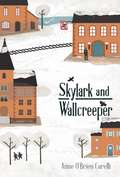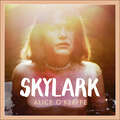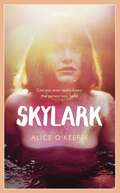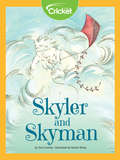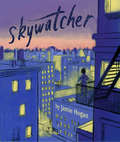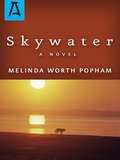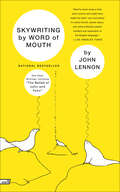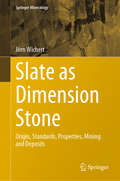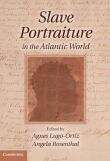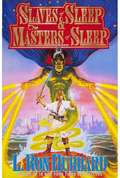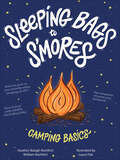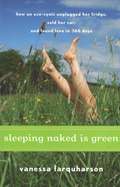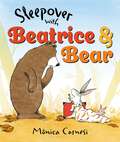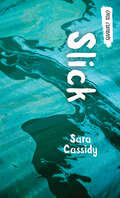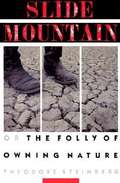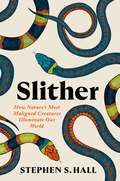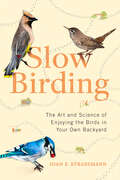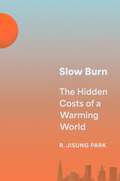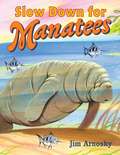- Table View
- List View
Skylark and Wallcreeper
by Anne O'Brien Carelli<p>While helping her granny Collette evacuate to a makeshift shelter in Brooklyn during Superstorm Sandy, Lily uncovers secrets of her grandmother's past as a member of the French Resistance during WWII. <p>Queens, 2012. <p>Hurricane Sandy is flooding New York City, and Lily is at a nursing home with her grandmother, Collette. Lily visits Collette often, as she is beginning to lose her memories. When the National Guard shows up to evacuate the building and take them to safety at the Park Slope armory in Brooklyn, Lily's granny suddenly produces a red box she's hidden in a closet for years. Once they get to safety, Lily opens the box, where she finds an old, beautiful Montblanc pen. Granny tells Lily that the pen is very important and that she has to take care of it, as well as some letters written in French. <p>But Lily loses the pen in the course of helping other nursing home residents, and as she searches the city trying to find it, she learns more about her grandmother's past in France and begins to uncover the significance of the pen with the help of her best friend, a quirky pen expert, and a larger-than-life, off-Broadway understudy. Told in alternating sections (2012 and 1944), this engaging book explores a deep friendship during difficult times and the importance of family.</p>
Skylark: THE COMPELLING NOVEL OF LOVE, BETRAYAL AND CHANGING THE WORLD
by Alice O'KeeffeTheir ideals brought them together, but how closely should you follow your heart?It's the mid-90s, and rebellion is in the air.Skylark is an activist, a raver, a tree-dweller, a world-changer.Handsome, dependable Dan appears on the scene, offering her the security she has never had. When they fall in love, she shows him a new way to live; he will never be the same.But Dan has a secret, which Skylark must never, ever know.A secret so powerful that its fault-lines run from their ordinary council flat right up to the highest echelons of the state.Their story is the story of Britain's undercover police.As Skylark comes to doubt not only Dan's commitment to their shared ideals, but his very identity, she finds herself asking: can you ever really know the person you love?(P) 2021 Hodder & Stoughton Limited
Skylark: The new novel from the author of ON THE UP
by Alice O'Keeffe'SKYLARK plunges the reader headfirst into a vivid, heady world where passion and betrayal collide. Beautifully-written, immersive and ultimately enraging, it's a must-read for anyone who has ever wanted to change the world.' - Erin Kelly'Alice O'Keeffe deftly renders the shocking truth of the spy cops scandal into a moving tale of love, identity and betrayal. Essential reading.' - Jake Arnott'Skylark is a book of profound psychological perception, which conjures with deft precision the atmosphere of the anti-roads movement in all its fierce, tender idealism. I couldn't put it down.' - Jay Griffiths Their ideals brought them together, but how closely should you follow your heart?It's the mid-90s, and rebellion is in the air.Skylark is an activist, a raver, a tree-dweller, a world-changer. Handsome, dependable Dan appears on the scene, offering her the security she has never had. When they fall in love, she shows him a new way to live; he will never be the same. But Dan has a secret, which Skylark must never, ever know. A secret so powerful that its fault-lines run from their ordinary council flat right up to the highest echelons of the state.Their story is the story of Britain's undercover police.As Skylark comes to doubt not only Dan's commitment to their shared ideals, but his very identity, she finds herself asking: can you ever really know the person you love?
Skylark: The new novel from the author of ON THE UP
by Alice O'Keeffe'SKYLARK plunges the reader headfirst into a vivid, heady world where passion and betrayal collide. Beautifully-written, immersive and ultimately enraging, it's a must-read for anyone who has ever wanted to change the world.' - Erin Kelly'Alice O'Keeffe deftly renders the shocking truth of the spy cops scandal into a moving tale of love, identity and betrayal. Essential reading.' - Jake Arnott'Skylark is a book of profound psychological perception, which conjures with deft precision the atmosphere of the anti-roads movement in all its fierce, tender idealism. I couldn't put it down.' - Jay Griffiths Their ideals brought them together, but how closely should you follow your heart?It's the mid-90s, and rebellion is in the air.Skylark is an activist, a raver, a tree-dweller, a world-changer. Handsome, dependable Dan appears on the scene, offering her the security she has never had. When they fall in love, she shows him a new way to live; he will never be the same. But Dan has a secret, which Skylark must never, ever know. A secret so powerful that its fault-lines run from their ordinary council flat right up to the highest echelons of the state.Their story is the story of Britain's undercover police.As Skylark comes to doubt not only Dan's commitment to their shared ideals, but his very identity, she finds herself asking: can you ever really know the person you love?
Skyler and Skyman
by Sue CowingOne day, Skyler meets Skyman, an old man who stares at the sky all day. After talking to Skyman about clouds, birds, and rain, he realizes the old man’s hobby can teach important lessons.
Skywatcher
by Jamie HoganTamen longs to see the stars, but none are visible in the light-polluted sky above the fire escape of his urban apartment building. Even in the neighborhood park, the stars are hidden by city lights. This is a story about love and sacrifice: Tamen’s mom, a nightshift nurse, finds a way to take him camping. For one magical night on the shore of a wilderness pond, the Milky Way in all its glory belongs to them.
Skywater
by Melinda Worth Popham"Brand X and his fellow coyotes . . . are meticulously observed in the desert environment that Ms. Popham seems to know like her backyard. And so are the people of this fable--old Hallie and Albert . . . and the several varmint-hunters, callous or alcoholic or both. There is a parable of how we might relate to the creatures that share the world with us; and a parable of dreams versus realty; and a parable of home, of known territory with its comparative safety; and a parable of making the best of a world short of everything. The people and the creatures of Ms. Popham's fable are right, they belong, and they mean." --Wallace Stegner "This spare and affecting novel has the precision and the stinging sweetness of a fable. A wonderful book." --Thomas McGuane "Refreshing . . . Life-affirming . . . The first book I've read in a long time that left me with teary eyes at the end."--The San Diego Tribune "Captivating . . . The animals' arduous westward journey down the Colorado River to the Gulf suggests a coyote world view that is subtly sustained by their mysterious ways." --Publishers Weekly "With dramatic urgency and imaginative tenderness, Melinda Popham has given the world a painful, poetic, and delightfully unpredictable story that pulsates with hope and healing meaning." --Al Young, California Poet Laureate Emeritus "Rich with poetic resonance." --Los Angeles Times Book Review "Evoking a rich sense of place and animal behavior, [Popham] lets us see through very different eyes." --The Seattle Times "A daring and visionary tale. [Popham] dares to tell us what a coyote thinks and sees and feels and dreams. . . . A hero of the classic kind--a furry, howling, water-seeking version of the Hero with a Thousand Faces." --James D. Houston "Masterful . . . Astonishing . . . Remarkable . . . Put down the latest technothriller and bask awhile in the descriptive prose of Skywater." --L.A. Life
Skywriting by Word of Mouth
by John LennonJohn Lennon wrote Skywriting by Word of Mouth, an impressive collection of writings and drawings, during Yoko Ono's pregnancy with Sean, and always planned to have it published. The book's publication was a wish that seemed to end with Lennon's assassination in 1980 and the theft of the manuscript from the Lennons' home in 1982. When it was recovered and first published in 1986, Skywriting received immediate critical and popular acclaim. Filled with Lennon's extraordinary creative powers and lavishly illustrated with his own drawings, the collection reveals his fertile creative spirit up close and in full force. Included in Skywriting are "Two Virgins," written when the public learned that John and Yoko were living together as husband and wife, and John's only autobiography, "The Ballad of John and Yoko." In addition there are notes on his falling in love with Yoko, the breakup of the Beatles, his persecution by U.S. authorities, and his withdrawal from public life. This is a book with John Lennon's spirit on every page—a spirit the world needs to remember.
Slate as Dimension Stone: Origin, Standards, Properties, Mining and Deposits (Springer Mineralogy)
by Jörn WichertThis book offers a comprehensive review devoted exclusively to slate as dimension stone. Beginning with a description of the slate as dimension stone, the book describes the origin of slate and related geological phenomena.It thoroughly explains key data acquisition methods and techniques, which are accompanied by extensive data. In turn, slate standards are introduced and compared with regard to their importance for product quality. The book covers in detail the specific petrographical, fabric, strength, physical properties and weathering behaviour of slates.The chapter on mining and production provides an overview of the different forms of exploitation and related geotechnical aspects, together with production and workflow design, from the beginning to the final product.The second part comprises a thorough description of worldwide slate deposits and their geology, properties and appearance as well as a brief introduction of the history.Given its scope and accessible format, the book represents an essential guide for scientists, engineers, and professionals in geology, conservation science, architecture, and mining, as well as readers who are active in the slate industry.
Slave Portraiture in the Atlantic World
by Agnes Lugo-Ortiz Angela RosenthalSlave Portraiture in the Atlantic World is the first book to focus on the individualized portrayal of enslaved people from the time of Europe's full engagement with plantation slavery in the late sixteenth century to its final official abolition in Brazil in 1888. While this period saw the emergence of portraiture as a major field of representation in Western art, "slave" and "portraiture" as categories appear to be mutually exclusive. On the one hand, the logic of chattel slavery sought to render the slave's body as an instrument for production, as the site of a non-subject. Portraiture, on the contrary, privileged the face as the primary visual matrix for the representation of a distinct individuality. The essays in this volume address this apparent paradox of "slave portraits" from a variety of interdisciplinary perspectives. They probe the historical conditions that made the creation of such rare and enigmatic objects possible and explore their implications for a more complex understanding of power relations under slavery.
Slaves of Sleep & the Masters of Sleep
by L. Ron HubbardExplore an exotic new world in this fantastic tale. Millionaire Jan Palmer's fortunes abruptly change when the seal on an ancient Arabian copper jar is broken and a powerful and relentless evil is released - Zongri the Jinn. Imprisoned for thousands of years, Zongri has sworn that whoever sets him free will die. But when he fulfills this vow by slashing Professor Frobish in two, it is Jan Palmer, holding the bloody scimitar, who is caught by the police. For Jan, his problems have just begun: Zongri, before departing, curses him with "Eternal Wakefulness." Locked in a prison cell, charged with murder, Jan comes to a horrible realization of what this means. As he drifts into slumber he finds himself in a strange world, one where humans rank below slaves, where evil Jinn reign and danger is all too real. On Earth he is Jan Palmer, imprisoned for murder, and in the land of the Jinn he is "Tiger," the swashbuckling rogue - but in both, he faces death at every turn.Acclaimed as one of Hubbard's most powerful and timeless fantasy stories. "A master of adventure."--Anne McCaffrey.
Sleep Tight Farm: A Farm Prepares for Winter
by Eugenie Doyle Becca StadtlanderA captivating exploration of how a family gets a farm ready for the snow of winter, Sleep Tight Farm lyrically connects each growing season to the preparations at the very end of the farm year. This beautiful and informative book paints a fascinating picture of what winter means to the farm year and to the family that shares its seasons, from spring's new growth, summer's heat, and fall's bounty to winter's well-earned rest. All year long the farm has worked to shelter us, feed us, keep us warm, and now it's time to sleep.
Sleep Tight Farm: A Farm Prepares for Winter
by Eugenie DoyleA captivating exploration of how a family gets a farm ready for the snow of winter, Sleep Tight Farm lyrically connects each growing season to the preparations at the very end of the farm year. This beautiful and informative book paints a fascinating picture of what winter means to the farm year and to the family that shares its seasons, from spring's new growth, summer's heat, and fall's bounty to winter's well-earned rest. All year long the farm has worked to shelter us, feed us, keep us warm, and now it's time to sleep. Plus, this is the fixed format version, which looks almost identical to the print edition.
Sleeping Bags to S'mores: Camping Basics
by Heather Balogh Rochfort William RochfortFrom choosing a destination and staying safe to what to cook and doing it on a budget, this guide provides fun advice for tent camping, car camping, and backpacking. Ever wanted to go camping, but had no idea where to start? Need to unplug, but not sure what to do? Do you have childhood memories of camping bliss, but no idea how to do it on your own? Sleeping Bags to S'mores has you covered! From two expert writers on camping and backpacking, this book covers everything you need to know about how to go camping. From picking a destination and what to pack to how to deal with wildlife (including kids), sporty guides Heather and Will Rochfort will show you the way. Sleeping Bags to S'mores is everything you need to know to have the relaxing, fun-filled camping experience you're looking for, and it includes 100 entertaining full-color illustrations.
Sleeping Naked Is Green
by Vanessa FarquharsonNo one likes listening to smug hippies bragging about how they don't use toilet paper, or worse yet, lecturing about the evils of plastic bags and SUVs. But most of us do want to lessen our ecological footprint. With this in mind, Farquharson takes on the intense personal challenge of making one green change to her lifestyle every single day for a year to ultimately figure out what's doable and what's too hardcore. Vanessa goes to the extremes of selling her car, unplugging the fridge, and washing her hair with vinegar, but she also does easy things like switching to an all-natural lip balm. All the while, she is forced to reflect on what it truly means to be green. Whether confronting her environmental hypocrisy or figuring out the best place in her living room for a compost bin full of worms and rotting cabbage, Vanessa writes about her foray into the green world with self-deprecating, humorous, and accessible insight. This isn't a how-to book of tips, it's not about being eco-chic; it's an honest look at what happens when an average girl throws herself into the murkiest depths of the green movement.
Sleepover
by Suzanne WeynIt's the summer before high school and Julie and her friends are psyched--sort of. They're all heading to Julie's house for a sleepover bash.
Sleepover at the Museum
by Karen LeFrakImagine spending your birthday at the museum! Join Mason and his friends on their scavenger hunt through all the exhibits that make any natural history museum so special. The perfect birthday gift for museum lovers and adventure-seekers alike!Mason couldn't wait to celebrate his birthday with a sleepover at the museum of natural history--his favorite place to visit.Armed with headlamps for the dark hallways, a map, and a list of clues, Mason and his two best friends take off on a scavenger hunt through each hall of the museum. But they aren't just trying to solve the clues. They're scouting for the best place to spend the night.Sleeping next to a T. rex in the Hall of Dinosaurs felt too scary. And sleeping with the monarch butterflies would probably tickle. This decision isn't as easy as Mason thought it would be....Wherever they end up, the museum at night is the best place for a birthday adventure!
Sleepover with Beatrice and Bear
by Mônica CarnesiThis delightful story of an irrepressible bunny will engage readers on many levels as it celebrates creativity, making the best of circumstances, and the joy of the changing seasons. How can two friends share winter when one of them is hibernating? Beatrice and Bear meet one spring day and become best buddies. They play together through summer and fall. Then winter comes and Beatrice can’t find Bear anywhere. She hears he’s gone to hibernate—but where on earth is that? When Beatrice learns that hibernation is not a place and that Bear will be sleeping all winter long, she fears it will be a lonely season . . . unless she comes up with a brilliant plan to share winter with Bear too.
Slick (Orca Currents)
by Sara CassidyLiza, determined to prove that her mother's boyfriend is no good, starts researching the oil company he works for. Liza discovers a lawsuit against the company for compensation that is long overdue to Guatemalan farmers. She starts a group at school called GRRR! (Girls for Renewable Resources, Really!) and launches an attack on Argenta Oil. As her activism activities increase, her objections to her mother's boyfriend become political. She is learning to separate the personal from the political, but when her mother discovers her plans for a demonstration outside the Argenta Oil head office, the two collide in ways Liza least suspected. This short novel is a high-interest, low-reading level book for middle-grade readers who are building reading skills, want a quick read or say they don’t like to read!
Slide
by Mark Pajak**SHORTLISTED FOR THE T. S. ELIOT PRIZE****SHORTLISTED FOR THE SEAMUS HEANEY FIRST COLLECTION PRIZE**'Fresh, urgent, alive... genius' PATIENCE AGBABIThis assured and arresting first collection moves deftly and with purpose into private, hidden places - a locked shed, the dark of a battery farm, a murky riverbed, a late-night bar - to show, unflinchingly and in cinematic detail, what we might otherwise choose not to see. Sight is both a gift and curse, of course: given or taken away in poems of windows and curtains, torches and blindfolds, and yet here - following in the tradition of Oswald and Heaney - each image is freshly minted through a cool, objective eye.Every poem seeks to inhabit those seemingly small but pivotal moments which have monumental, sometimes mortal, consequences. For Pajak, time is fluid: a blink can be 'slow as an eclipse', our lifetimes are fleeting, our deaths often lingering and seldom peaceful or painless.Vivid and visceral, steadily examining violence, sexual encounters, childhood and ageing (a dying grandmother's 'slow pink eyelids, those quick teaspoon breaths'), cars and cities, and Nature - full of wonder and threat - Slide is always asking pertinent questions: illuminating brutality, frailty and tenderness, the responsibility of those who witness - whether voyeur, bystander or reader. This is a charged, beautifully observed and thrilling debut.
Slide Mountain, or, The Folly of Owning Nature
by Theodore SteinbergThe drive to own the natural world in twentieth-century America seems virtually limitless. Signs of this national penchant for possessing nature are everywhere--from suburban picket fences to elaborate schemes to own underground water, clouds, even the ocean floor.
Slither: How Nature's Most Maligned Creatures Illuminate Our World
by Stephen S. HallIn this "important and pioneering" (The New York Times Book Review) book, a science writer reintroduces readers to The Snake, encouraging our initial reaction to the slithery creature to be one of awe rather than disgust. For millennia, depictions of snakes as alternatively beautiful and menacing creatures have appeared in religious texts, mythology, poetry, and beyond. From the foundational deities of ancient Egypt to the reactions of squeamish children today, it is a historically commonplace belief that snakes are devious, dangerous, and even evil. But where there is hatred and fear, there is also fascination and reverence. How is it that creatures so despised and sinister, so foreign of movement and ostensibly devoid of sociality and emotion, have fired the imaginations of poets, prophets, and painters across time and cultures? In Slither, Stephen S. Hall presents a naturalistic, cultural, ecological, and scientific meditation on these loathed yet magnetic creatures. In each chapter, he explores a biological aspect of The Snake, such as their cold blooded metabolism and venomous nature, alongside their mythology, artistic depictions, and cultural veneration. In doing so, he explores not only what neurologically triggers our wary fascination with these limbless creatures, but also how the current generation of snake scientists is using cutting-edge technologies to discover new truths about these evolutionarily ancient creatures—truths that may ultimately affect and enhance human health.
Slow Birding: The Art and Science of Enjoying the Birds in Your Own Backyard
by Joan E. StrassmannA one-of-a-kind guide to birding locally that encourages readers to slow down and notice the spectacular birds all around them.Many birders travel far and wide to popular birding destinations to catch sight of rare or &“exotic&” birds. In Slow Birding, evolutionary biologist Joan E. Strassmann introduces readers to the joys of birding right where they are. In this inspiring guide to the art of slow birding, Strassmann tells colorful stories of the most common birds to be found in the United States—birds we often see but might not have considered deeply before. For example, northern cardinals thrive in the city, where they are free from predators. White brows on a male white-throated sparrow indicate that he is likely to be a philanderer. This essential guide to the fascinating world of common, everyday birds features:detailed portraits of individual bird species and the scientists who have discovered and observed themadvice and guidance on what to look for when slow birding, so that you can uncover clues to the reasons behind specific bird behaviorsbird-focused activities that will open your eyes more to the fascinating world of birds Slow Birding is the perfect guide for the birder looking to appreciate the beauty of the birds right in their own backyard, observing keenly how their behaviors change from day to day and season to season.
Slow Burn: The Hidden Costs of a Warming World
by R. Jisung ParkHow the subtle but significant consequences of a hotter planet have already begun—from lower test scores to higher crime rates—and how we might tackle them todayIt&’s hard not to feel anxious about the problem of climate change, especially if we think of it as an impending planetary catastrophe. In Slow Burn, R. Jisung Park encourages us to view climate change through a different lens: one that focuses less on the possibility of mass climate extinction in a theoretical future, and more on the everyday implications of climate change here and now.Drawing on a wealth of new data and cutting-edge economics, Park shows how climate change headlines often miss some of the most important costs. When wildfires blaze, what happens to people downwind of the smoke? When natural disasters destroy buildings and bridges, what happens to educational outcomes? Park explains how climate change operates as the silent accumulation of a thousand tiny conflagrations: imperceptibly elevated health risks spread across billions of people; pennies off the dollar of productivity; fewer opportunities for upward mobility.By investigating how the physical phenomenon of climate change interacts with social and economic institutions, Park illustrates how climate change already affects everyone, and may act as an amplifier of inequality. Wealthier households and corporations may adapt quickly, but, without targeted interventions, less advantaged communities may not.Viewing climate change as a slow and unequal burn comes with an important silver lining. It puts dollars and cents behind the case for aggressive emissions cuts and helps identify concrete steps that can be taken to better manage its adverse effects. We can begin to overcome our climate anxiety, Park shows us, when we begin to tackle these problems locally.
Slow Down for Manatees
by Jim ArnoskyManatees, Mother Nature's "sea cows," are gentle creatures that live in shallow coastal waters. They have no predators in the wild, yet they are an endangered species, their biggest threat coming from humans who unknowingly hit them with boats. Here is the story of one such manatee and the efforts to help her and her calf after she is injured. This dramatic rescue story illustrates the importance of protecting manatees in their natural habitat. Arnosky pairs his simple telling with beautiful paintings that capture the essence of these gentle giants.
